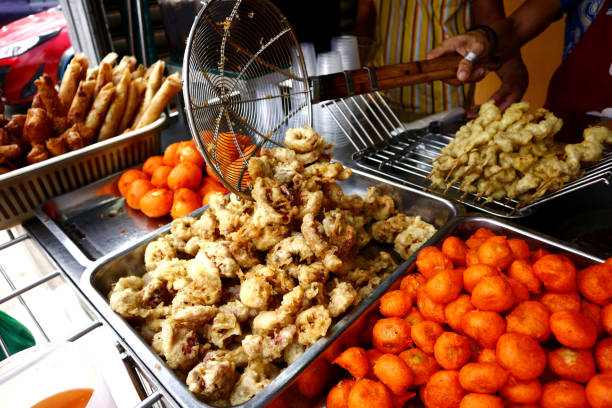
The ₱20 Street Foods That Feed Millions Daily
In every busy corner of the Philippines, from sidewalks to school gates, there’s a familiar scent that signals comfort: the sizzling, skewered, or deep-fried ₱20 street foods that keep Filipinos full without costing an arm and a leg.
Some dismiss these bites as “dirty.” But if you’ve ever stood by a fishball cart after class or heard the taho vendor’s morning call through your street, you know better. Street food isn’t just cheap fuel. It’s memory, livelihood, and community wrapped in brown paper or skewered on a stick. And for millions of Filipinos, those aren’t just snacks. They’re lifelines.
Why Filipinos Love Street Food
Street food culture thrives because it’s accessible. For many, a quick stick of fish balls or a cup of taho is both affordable and satisfying. Vendors serve these staples with speed and warmth, creating not just meals but moments.
And it’s not just about hunger. Street food vending supports thousands of families across the country. With every bite, you’re also sustaining the livelihood of small entrepreneurs who brave the heat, rain, and long hours to serve the masses. Its impact is as much economic as it is cultural.
The Classics Under ₱20
Some of the most popular choices barely cross the ₱20 mark. Fish balls and squid balls remain the all-time favorite, best enjoyed with sweet, spicy, or vinegar dip. Kwek-kwek, the bright orange quail eggs, give that crispy bite outside and soft texture inside. For something sweet, banana cue and turon are quick energy boosters fried with sugar. Taho, with silken tofu, arnibal, and sago, is a morning staple you’ll often hear from a vendor’s shout.
Other classics fill the scene just as much. Isaw, whether chicken or pork intestines, is grilled until smoky and eaten fresh off the stick. Betamax, the barbecued blood cubes, has a strong following for its bold taste. Adidas, or grilled chicken feet, is chewy and flavorful. And for something lighter, there’s mais (grilled corn) brushed with margarine and salt, or kamote cue with its sweet, caramelized crunch.
READ: Backpacking Philippines: A Domestic Travel Guide for Gen Z
More Than Food
Street food is a community in motion. Strangers laugh, sauces drip, and stories are swapped around a cart while waiting for the next batch to fry. These moments prove that food doesn’t have to be expensive to be meaningful.
In a country where rising costs make full meals harder to afford, ₱20 street food stands as proof of Filipino creativity and resilience. It’s nourishment, comfort, and connection—all for the price of a jeepney ride. So the next time you stop at a cart, don’t just think of it as a snack. Think of it as a tradition, a livelihood, and a culture on a stick.




